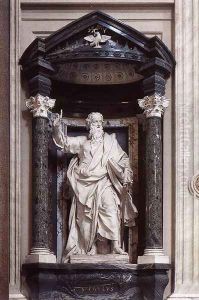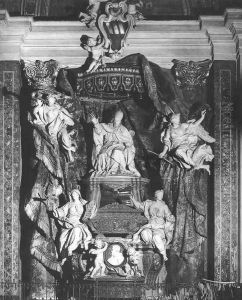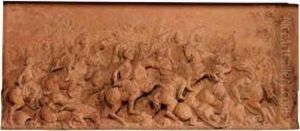Pierre Etienne Monnot Paintings
Pierre Etienne Monnot was a French sculptor born in Orchamps, Franche-Comté, in 1657. He was part of the Baroque tradition and is known for his mastery in sculpting marble. Monnot gained significant recognition for his work during his lifetime, which was characterized by dynamic forms, intricate detailing, and expressive figures that were typical of the Baroque period.
Monnot trained in Paris but spent a significant portion of his career in Italy, where he was influenced by the works of Gian Lorenzo Bernini and other Italian masters. He moved to Rome around 1687, where he became a member of the prestigious Accademia di San Luca. While in Italy, he received commissions from various churches and for public monuments, his works earning him a reputation as one of the leading sculptors of his time.
Among his notable works are the sculptures of the Apostles for the Church of San Giovanni in Laterano, which are considered some of his masterpieces. Monnot's ability to capture the emotional intensity and movement in his figures brought these biblical characters to life. He also created the monument of Pope Alexander VIII in St. Peter's Basilica and the tomb of Pope Innocent XI.
Monnot's influence extended beyond his own projects. He was a teacher and mentor to several artists who would carry on the Baroque tradition. Despite the high demand for his sculptures, Monnot managed to maintain a high level of quality and craftsmanship in his creations.
Pierre Etienne Monnot died in Rome in 1733. His works continue to be appreciated for their technical skill, emotional depth, and contribution to the Baroque style. Monnot's sculptures are seen as a bridge between French elegance and Italian exuberance, embodying the international nature of the Baroque movement.


